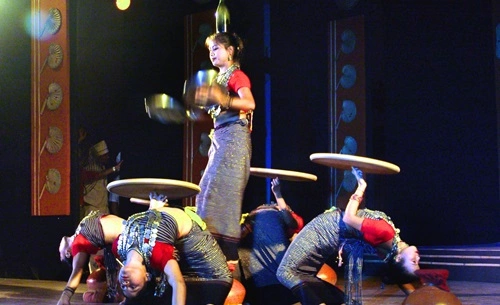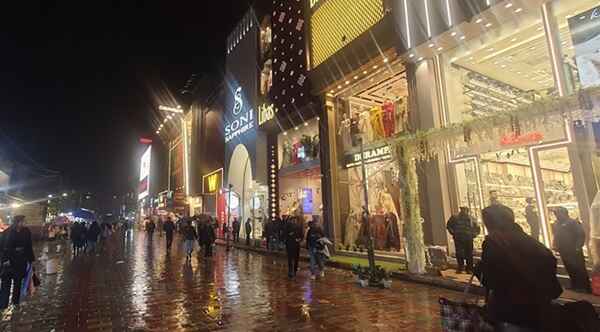Himachal Pradesh, known as the “Land of Gods,” is not only famous for its stunning landscapes and serene hill stations but also for its rich cultural heritage. The traditional dances of Himachal Pradesh reflect the state’s deep connection with its folklore, religious beliefs, and community traditions. These dance forms are performed during festivals, weddings, and religious ceremonies, showcasing the vibrant spirit of the people of this Himalayan region.
Each dance form in Himachal Pradesh has a unique style, costume, and purpose, ranging from warrior dances to ritualistic performances dedicated to deities. Let’s explore some of the most prominent traditional dances of Himachal Pradesh.
1. Nati – The Most Popular Folk Dance of Himachal Pradesh
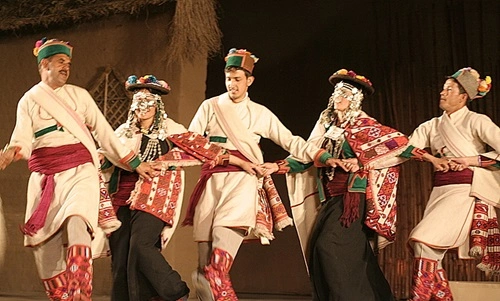
Nati is the most widely performed folk dance of Himachal Pradesh, especially in the districts of Kullu, Chamba, Mandi, and Kinnaur. It is a slow, rhythmic dance where men and women form a circle and perform synchronized movements.
Significance:
- Nati is performed during festivals like Dussehra, Lohri, and Diwali.
- It is a symbol of joy and community bonding, often accompanied by traditional Himachali folk songs.
- The dance has multiple variations, such as Kullu Nati, Kinnauri Nati, and Gaddi Nati, each with distinct styles and costumes.
- In 2016, Kullu Nati was recognized in the Guinness Book of World Records as the largest folk dance performance.
2. Kullu Nati – The Iconic Dance of Kullu Valley
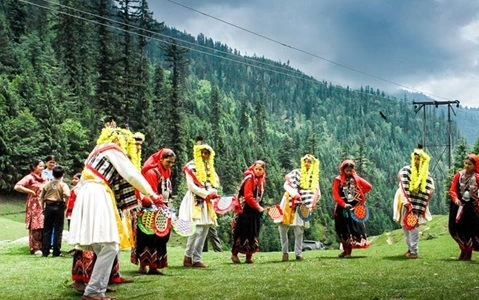
Kullu Nati is a specific form of Nati dance, performed primarily during the world-famous Kullu Dussehra festival. The dancers wear colorful embroidered shawls, churidars, and traditional Himachali caps.
Significance:
- It celebrates the rich traditions of the Kullu Valley and is performed as a form of devotional offering to deities.
- The slow yet graceful movements reflect the beauty of the Himalayan lifestyle.
3. Gaddi Dance – The Dance of the Shepherds
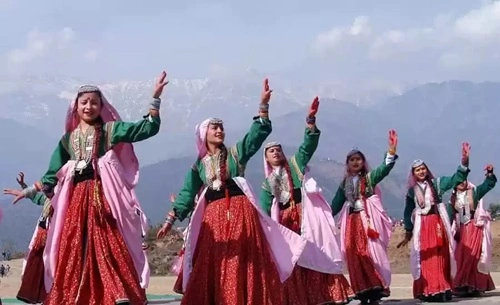
Gaddi dance is performed by the Gaddi tribe, who are semi-nomadic shepherds living in the Chamba and Kangra regions. The dance represents their daily struggles and celebrations.
Significance:
- It is performed during harvest festivals, marriages, and religious fairs.
- Men and women dance together in a circular formation, wearing their traditional woolen attire.
- The dance is often accompanied by musical instruments like dhol, nagara, and shehnai.
4. Chamba Dance – A Royal Dance of Chamba
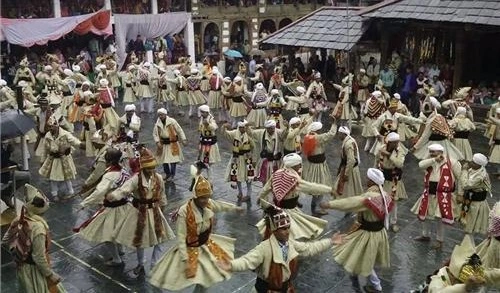
Chamba dance, also known as Chamba Nati, is a graceful folk dance performed in the Chamba district during local festivals like Minjar Fair and Suhi Mela.
Significance:
- It is performed in a circle or semi-circle with synchronized steps and elegant hand movements.
- The women wear long ghagras and colorful dupattas, while men wear traditional Himachali caps.
5. Chhinj Dance – The Dance of Strength and Competition
Chhinj dance is a unique martial arts-based dance performed by men. It is often associated with wrestling competitions held during local fairs and festivals.
Significance:
- The dance is a symbol of strength and masculinity.
- It is performed before and after traditional wrestling matches (Dangal), accompanied by drum beats and cheering crowds.
6. Bakayang Dance – The Dance of the Kinnauri Tribe
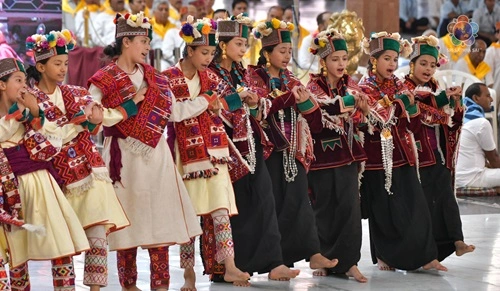
Bakayang is a traditional dance of the Kinnauri community, performed to worship the local deities and nature gods. It is an important part of Kinnauri festivals like Phulaich and Losar.
Significance:
- The dance is performed in a slow, rhythmic movement, with dancers holding hands and moving in circles.
- It represents the close relationship between humans and nature in the high-altitude regions of Himachal Pradesh.
7. Demon Dance (Chhambha) – The Monastic Dance of Lahaul-Spiti
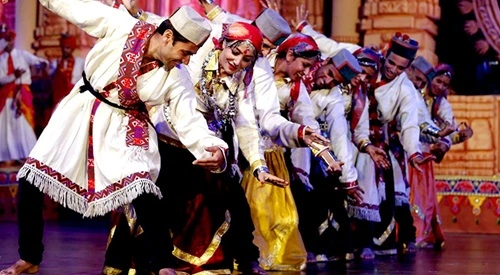
The Demon Dance, also known as Chhambha or Cham Dance, is performed by Buddhist monks in the Lahaul-Spiti region. It is part of monastic festivals like Losar and Chotrul Duchen.
Significance:
- The monks wear elaborate masks representing Buddhist deities and demons.
- The dance symbolizes the victory of good over evil and is performed to ward off negative forces.
8. Shunto Dance – The Harvest Celebration Dance
Shunto dance is performed during the harvest season in Himachal Pradesh, especially in tribal regions. It is a dance of gratitude for a good crop yield.
Significance:
- The dance is performed by farmers after the completion of harvesting, thanking the gods for prosperity.
- It is accompanied by joyful singing and traditional instruments.
9. Luddi Dance – The Victory Dance
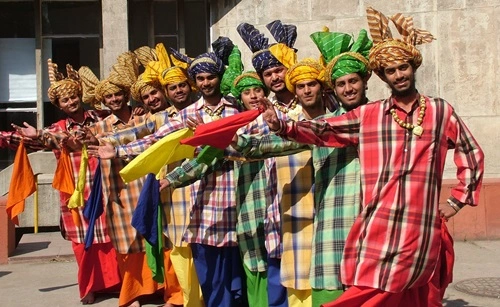
Luddi dance is a traditional victory dance performed by men, particularly after winning battles or wrestling matches.
Significance:
- The dance is energetic and powerful, with fast-paced movements.
- It represents the warrior spirit of the Himachali people and is often performed in celebrations.
10. Shabala Dance – The Wedding Dance of Lahaul-Spiti
Shabala dance is a traditional wedding dance performed in the Buddhist regions of Himachal Pradesh, especially Lahaul and Spiti.
Significance:
- The dance is performed by the bride’s family and relatives to bless the couple.
- It involves slow, elegant movements and is accompanied by traditional Buddhist chants and folk songs.
11. Buiya Dance – The Dance of the Lahauli People
Buiya dance is another important folk dance of Lahaul, performed during religious ceremonies and social gatherings.
Significance:
- It is a slow, synchronized dance where dancers form a circle.
- The dance movements imitate nature and the daily life of the mountain people.
Conclusion
The traditional dances of Himachal Pradesh are an integral part of its cultural identity, reflecting the history, lifestyle, and spiritual beliefs of its people. From the graceful Nati and the warrior-like Chhinj to the sacred Cham dance, each dance form has its own unique charm and significance.
Despite modernization, these dances continue to be performed with great enthusiasm, keeping Himachal’s folk traditions alive. The government and cultural organizations are also playing a vital role in promoting and preserving these art forms through festivals and events.
Whether performed in the temples of Kinnaur, monasteries of Lahaul-Spiti, or villages of Chamba, the traditional dances of Himachal Pradesh remain a living testament to the state’s rich and diverse heritage.
